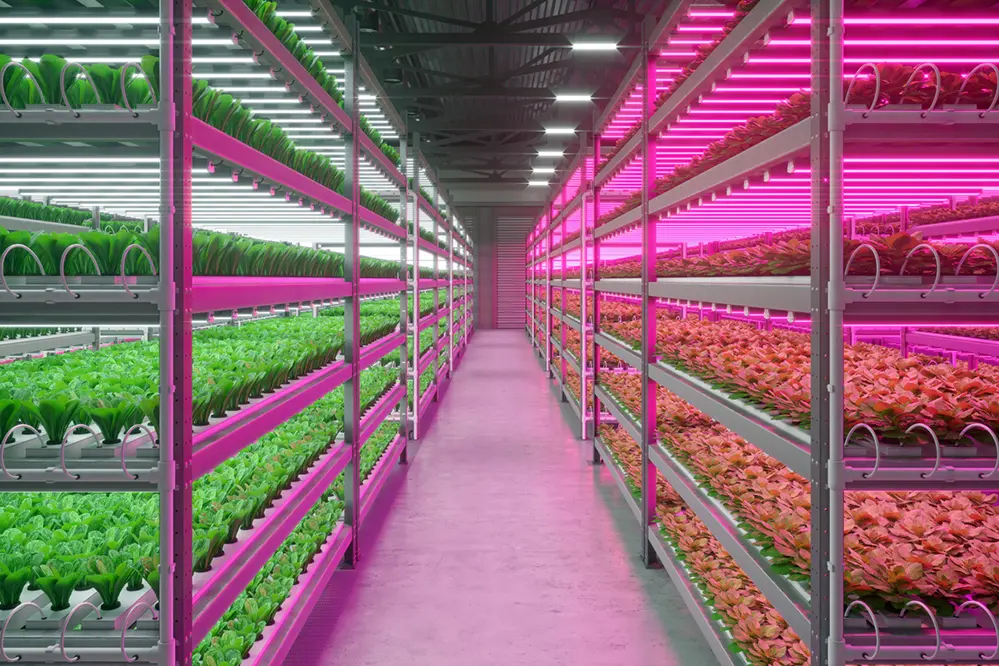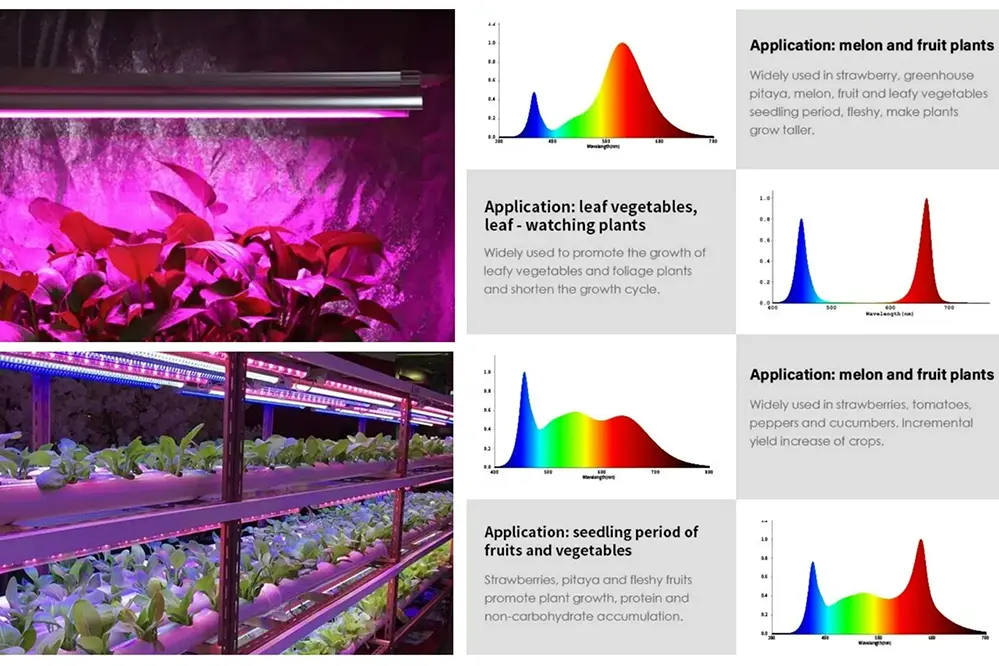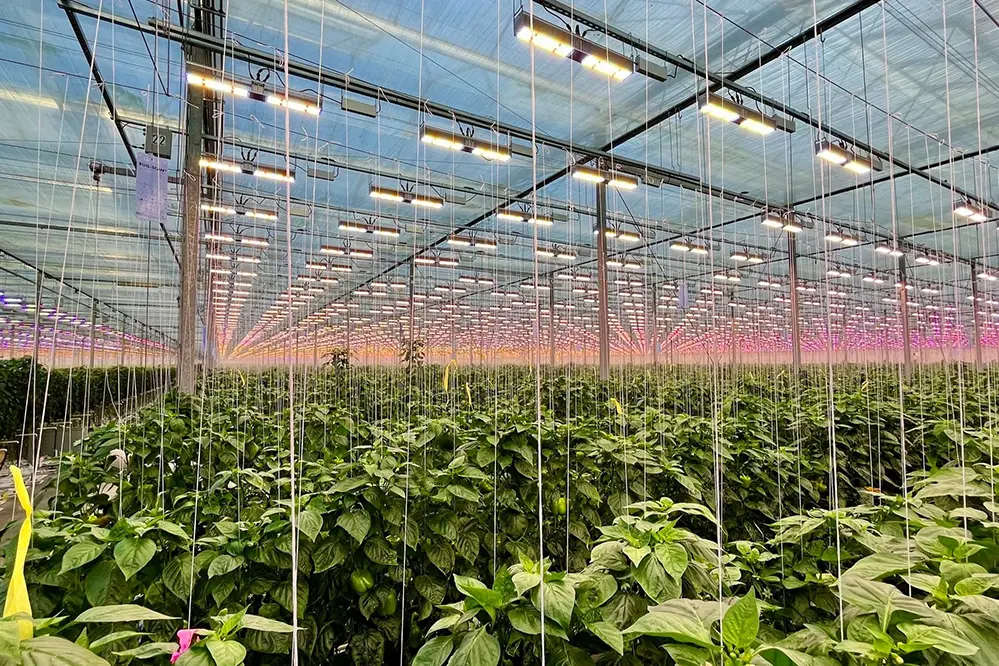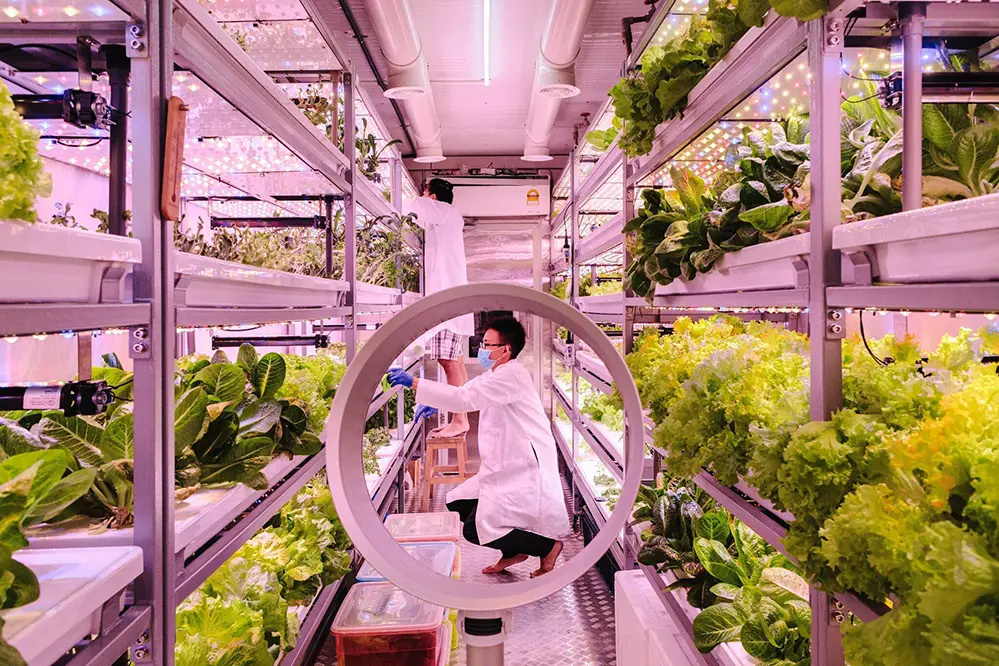In the heart of a bustling agricultural community, a small farm transformed its operations by embracing LED agricultural lighting, revolutionizing its crop yield, cultivation practices, and sustainability. This “LED Agricultural Lighting Ultimate Guide” explores how such lighting innovations are reshaping farming practices worldwide. With the global population projected to reach 9.7 billion by the new year, the demand for efficient and sustainable farming solutions has never been more critical. Did you know that LED lighting can reduce energy consumption by up to 75% compared to traditional lighting systems? This statistic underscores the potential of LEDs to not only cut costs but also significantly lower the carbon footprint of agricultural operations.
The importance of LED technology in agriculture cannot be overstated. As farmers face increasing pressure to produce more with less, LEDs offer a beacon of hope. They provide precise spectral outputs that optimize plant growth, enhance crop color and quality, and extend growing seasons, regardless of external climatic conditions. This guide will delve into the myriad benefits of LED lighting, from energy efficiency to customizable spectrums, and how these advantages translate into tangible improvements in farming productivity and sustainability.
Join us as we illuminate the path to efficient farming with LED technology. This comprehensive guide will equip you with the knowledge and insights needed to harness the full potential of LEDs in agriculture. Whether you’re a seasoned farmer or a newcomer to the field, the information contained within promises to inspire and empower you to innovate and succeed in your agricultural endeavors.
Introduction to LED Agricultural Lighting

The evolution of LED agricultural lighting underscores a revolution in farming practices, aiming to enhance productivity and crop health efficiently through advancements in horticulture. These innovative solutions lead the charge in modern farm technology.
LEDs present a viable, energy-efficient alternative to traditional lighting systems.
With their precise spectral outputs, they offer a tailored environment conducive to optimized plant growth through carefully calibrated wavelengths. As a result, LEDs have reshaped the future landscape of agriculture, enabling farmers to maximize production sustainably.
The changing dynamics of agriculture demand a shift in how we light our growing spaces. LED technology empowers farmers to transcend traditional limitations, paving the way for creative solutions that meet the precise needs of diverse crops, whether by improving yield, enhancing quality, or extending growing seasons. In this transformative journey, LED agricultural lighting shines not just as a tool but as a catalyst for innovation and success.
Benefits of Using LED in Agriculture
The benefits of adopting LED technology in agriculture are vast, making it an indispensable ally in the quest for sustainable farming success.
Firstly, LED agricultural lighting offers a remarkable energy efficiency advantage over conventional lighting. Consuming less power, LEDs reduce operational costs, making it feasible for farmers to manage expenses while scaling production. Additionally, the low heat emission of LEDs minimizes the risk of thermal damage to crops, ensuring a healthier growing environment.
Furthermore, LEDs provide a customizable spectrum tailored to the specific needs of each crop. By manipulating light wavelengths, these lights enable precise control over plant growth cycles, which enhances both the quality and quantity of yield, regardless of external climatic conditions.
Finally, the durability and longevity of LEDs contribute to reduced maintenance efforts, ensuring sustained productivity without frequent replacements. This reliability, coupled with their adaptability, supports farmers in optimizing indoor and vertical farming operations, thus cementing their role as a key component in the future of efficient and innovative agriculture.
Types of LED Lights for Farming
LED lights, a cornerstone of modern agricultural innovation, offer versatile solutions for efficient farming, and each type is unique in its application.
Primary LED light types include grow lights, interlighting, and supplemental lighting, often used in conjunction with red light to optimize plant health and growth.
Grow lights are essential fixtures for indoor farming ecosystems, mimicking sunlight to facilitate optimal photosynthetic processes through chlorophyll absorption. They allow for a blend of intensity and spectral quality, accelerating growth.
Interlighting systems, positioned between plant rows, cast light from within the canopy, optimizing sections often shaded by upper leaves. This ensures comprehensive light penetration, crucial for balanced growth. Supplemental lighting acts as a “booster” to enhance natural sunlight, ensuring consistency. Its strategic application, guided by customized spectrums and intelligent controls, empowers farmers to transcend limitations and innovate.
How LEDs Improve Plant Growth
LEDs revolutionize plant growth by providing precision lighting tailored to the specific needs of various crops, fostering a thriving environment for agriculture. With their ability to deliver custom spectrums and intensity, farmers can optimize plant health and maximize yields.
Unlike traditional light sources, LEDs reduce energy consumption while improving output, vital for sustainable farming practices. This efficiency not only benefits the environment but also reduces costs for producers.
Moreover, customizable light spectrums offered by LEDs allow for adjusting the photosynthetic response, enhancing growth rates (photosynthetic active radiation is crucial) and improving nutritional content. This adaptability is unmatched by older technologies.
Farmers today harness LED technology to refine variables like light wavelength, which directly influences plant characteristics, ensuring desirable traits and consistent crop quality. Achieving such granular control on plant morphology exemplifies the LED lighting breakthrough.
Precision lighting supports developmental stages from germination to fruiting, influencing everything from root depth to flowering time. Adaptive spectrums provide exact environmental conditions, promoting robust growth without stress.
Ultimately, the shift to LEDs marks agriculture’s leap into a future of limitless potential. Illuminating with intelligence, these lights virtuously prepare us for a world where efficient, sustainable farming is the norm.
Understanding Light Spectrum and Plant Needs

Grasping the nuances of light spectrum intricacies allows farmers to tailor conditions to plant growth requirements, optimizing health, and achieving desirable traits through precision light manipulation. Each plant species has a unique response to different parts of the light spectrum.
Photosynthetically active radiation (PAR) is the essential range of light wavelengths, including visible light, that plants use for photosynthesis. As farmers, understanding these wavelengths means the power to control plant growth.
For example, blue light encourages robust vegetative growth and root development, while red light influences flowering and fruit production. LED technology’s versatility ensures that these needs are met precisely.
By customizing LED light spectrums, one can orchestrate an ideal growing environment that aligns seamlessly with the plant’s life cycle demands. Such fine-tuned lighting maximizes photosynthetic efficiency.
This approach also aids in pest management and reduces the need for chemical inputs, fostering a sustainable farming practice. By truly understanding plant needs, farmers can revolutionize agriculture with environmentally harmonious methods.
Moreover, the art of farming now embodies science’s touch, empowering cultivators to reach unprecedented production heights. With knowledge and tools, every harvest promises a step closer to an abundant future.
Installing LED Systems in Greenhouses

Thriving in today’s agricultural landscape requires a fusion of innovative technologies, and LED systems offer exactly that. Embracing this technology within greenhouses allows farmers to engage in precise climate management, ensuring optimal plant growth across all seasons, regardless of external environmental limitations.
As you contemplate the installation of a new LED system, consider factors like “light strategy”. This encompasses not just the selection of a suitable system, but also fine-tuning its specific configurations. In the end, the integration of these systems facilitates not only the maximization of crop yields but also the transformation of greenhouses into dynamic hubs of sustainable production.
Best Practices for LED Installation
Efficient installation of LED systems begins with thorough planning, ensuring optimal light distribution. Assessing the layout and the specific crop needs helps tailor the lighting setup to enhance productivity.
Utilize precision tools to achieve the correct angle and height for each fixture, which ensures a “balanced exposure”. This is crucial for maintaining uniform growth, reducing energy waste.
Enhanced LED installations can increase photosynthetic efficiency and chlorophyll production, and boost yield up to 20%.
Continuous monitoring of the LED system is vital; surveillance tools offer insights into the performance, allowing for swift adjustments. Such adjustments, paired with regular maintenance involving cleaning and inspections, prolong the life of lighting systems while safeguarding optimal operation, illuminating pathways toward a more efficient and thriving agricultural venture.
Common Installation Mistakes to Avoid
Navigating LED installation can be challenging, but awareness of common errors, such as overlooking the impact of red light on plant growth, can help ensure the success of your agricultural lighting systems.
One prevalent mistake is neglecting to plan the layout adequately. Failure to assess specific crop requirements and spacing dynamics often results in uneven light distribution, which impedes plant growth.
Installing fixtures at incorrect heights or angles is another common issue. This can disrupt balanced exposure, leading to uneven crop development and inefficient energy usage, thus diminishing the benefits of LED technology.
Some setups also suffer from inadequate system checks before and after installation. Overlooking initial performance tests or skipping regular inspections can cause minor issues to escalate and result in costly downtimes and reduced crop yields.
Prioritize initial site assessments and regular maintenance checks to avoid these pitfalls. Your investment in time and precision will foster a thriving, high-yield farm.
Energy Efficiency and Cost Savings with LEDs
In today’s dynamic agricultural landscape, energy efficiency isn’t just a buzzword; it’s a transformative advantage that both reduces costs and enhances operational sustainability. LED technology stands at the forefront of this change, offering a revolutionary lighting solution that is tailor-made for modern farming enterprises.
LEDs are renowned for their exceptional energy savings and long-lasting performance. This efficient use of energy translates directly into reduced spending, providing a significant boost to your farm’s profitability.
Additionally, LED systems feature precise light distribution, ensuring every photon serves a purpose and no energy is wasted. Such optimized illumination reduces the need for excessive electricity consumption, a crucial factor in achieving sustainable farming success.
This energy efficiency further extends the overall lifespan of your lighting infrastructure. Unlike traditional systems, LEDs offer a longevity that decreases the frequency and cost of replacements, ensuring your resources are utilized effectively.
Moreover, their reduced energy demand often leads to noticeable decreases in greenhouse emissions. By investing in LED technology, you’re not only improving your bottom line but also making a significant contribution to environmental stewardship and future-proofing your farm against regulatory changes that increasingly favor sustainable practices.
When you consider these advantages, it’s clear why LEDs are considered the best option for forward-thinking farms. Their benefits go beyond mere illumination—they represent a holistic approach to energy management and cost efficiency.
Comparing LED with Other Lighting Technologies
When evaluating various lighting solutions, the dominance of LED technology becomes distinctly evident. Traditional options, such as incandescent and fluorescent lights, pale compared to LEDs due to their higher energy consumption and shorter operational life. LEDs provide not only increased efficiency but also flexibility in light spectrums and color, crucial for optimizing plant growth stages by maximizing the use of visible light. Additionally, their lower heat emission ensures a safer and more controlled environment, reducing the need for additional cooling systems and further conserving energy.
LED vs. Fluorescent
When considering lighting solutions for agriculture, understanding the distinctions between LED and fluorescent options is vital.
- Energy Efficiency: LEDs consume significantly less power compared to fluorescent bulbs, offering long-term savings.
- Lifespan: LEDs boast a considerably longer lifespan, reducing the frequency of replacements.
- Light Quality: They provide customizable spectrums to cater to specific plant growth needs.
- Heat Emission: LEDs produce minimal heat, decreasing the risk of plant stress.
- Environmental Impact: LEDs are more environmentally friendly, with fewer harmful materials like mercury.
LED lights provide superior energy efficiency and customization for plant growth. This makes them an appealing choice for agriculture.
While fluorescent lighting has served as a staple in agriculture, its higher energy use and environmental impact make LEDs a more forward-thinking option.
LED vs. High-Pressure Sodium
In the realm of agricultural lighting, LED and High-Pressure Sodium (HPS) lighting systems have long been contenders, each with unique advantages and challenges.
LEDs significantly outperform HPS bulbs in energy efficiency.
LEDs require less power to produce the same, if not higher, light output as HPS systems. This efficiency translates into not only cost savings but also environmental preservation, reducing the carbon footprint of farming operations.
The initial investment in LED systems can be higher, but their extended lifespan and reduced energy usage make them a financially sound choice over time. Furthermore, LEDs offer a full spectrum of light, adjustable to meet plant needs during different growth stages. In contrast, HPS lighting, while effective in certain applications, is limited by its fixed spectrum and greater heat emission, which can demand additional cooling solutions. By harnessing LED technology, forward-thinking farmers position themselves at the forefront of sustainable, efficient agriculture, ensuring they reap both abundant harvests and cost-effective operations long into the future.
Maintenance Requirements for LED Lighting
LED agricultural lighting systems are celebrated for their reliability and durable performance in farming, and their low maintenance is an advantage not to overlook.
Routine cleaning and basic visual inspections ensure optimum efficacy.
While there is no replacement schedule to consider typically, keeping external surfaces of LEDs clear of dust is essential to maintain their brightness and efficiency. This simple preventive measure encourages sustainability, prolonging the life of your LED systems while simultaneously enhancing productivity and consistency in crop yields.
By consistently adhering to proper maintenance techniques, you can safeguard your investment and the health of your crops. LED systems, if cared for, remain “trouble-free” throughout their long service life. Professional guidance ensures you capitalize on technological advancements, streamlining your path to a thriving, efficient, and eco-friendly future in agriculture.
Choosing the Right LED Fixtures for Your Crops
In the realm of modern agriculture, selecting the appropriate LED fixtures for your crops is of paramount importance.
Consideration must be given to various attributes to create optimal growth environments, whether you are cultivating leafy greens or vibrant flowers. Understand the specific light spectrum each crop requires and choose LED fixtures capable of emitting those precise wavelengths. This tailored lighting approach maximizes photosynthesis, encouraging not only thriving plants but also augmenting your harvest and profitability.
Furthermore, factors such as power consumption and longevity should guide your fixture choices. While initial costs are important, evaluate how energy-efficient models might reduce long-term operational expenses, ensuring a balance between cost and benefit. High-quality LED fixtures provide consistent light output, crucial for sustaining plant health.
Every decision you make directly influences the quality of your produce and the sustainability of your operations. Embrace the innovative nature of LED technology to transform into a forward-thinking, eco-conscious cultivator. Through informed choices, you can light the way to a prosperous, resource-efficient farming future—one radiant crop at a time.
Maximizing Crop Yields with LED Timing
Harness the power of optimal lighting schedules.
To truly unlock the potential of your crops, precise timing is indispensable. The intricate dance of light exposure and darkness can significantly influence the rate of photosynthesis and overall growth. By aligning LED lighting schedules with your plants’ natural cycles, you cultivate an environment that supports robust health and efficient growth. Transitioning from conventional methods to meticulously timed schedules can transform your yield prospects.
Timing is pivotal in managing growth stages.
By fine-tuning the length and intensity of light exposure, you ensure each growth phase receives the appropriate stimulation it needs. Just as a conductor leads an orchestra through a symphony, you guide your crops to their full potential, yielding remarkable results and ensuring every plant thrives under your care.
With the advent of smart LED technology, you can now automate these lighting schedules to optimize every stage of plant development. From germination through flowering and fruiting, intelligent timers allow precision and consistency, translating into more abundant and healthier harvests. As we stride confidently into a new year, combine technology and nature’s wisdom to achieve unprecedented levels of efficiency in farming.
Future Trends in LED Agricultural Lighting

In the world of agriculture, innovation fuels progress, and LED technology stands at the pinnacle of this transformative journey. With unwavering optimism, the future unfolds, beckoning a new era of agricultural efficiency driven by state-of-the-art LED lighting solutions.
Exciting advancements pave the way for energy conservation and resource optimization.
Globally, farmers embrace LEDs for their versatility and longevity, propelling forward precision agriculture—an emergent force redefining farming’s future.
These modern marvels offer unmatched customization, enhancing plant growth while minimizing environmental footprints, ultimately forging a path to sustainable farming practices.
Such trends yield opportunities to maximize output and improve food systems, carving pathways to address global challenges. Efficient, resilient, and adaptable, LED solutions illuminate the road ahead, promising scalable, innovative breakthroughs.
Together, we witness a paradigm shift; it’s a time of hope and potential. Visionary strategies coupled with cutting-edge technology inspire a brighter, more abundant tomorrow.
Testimonials from Farmers Using LEDs
In the lush landscapes of agricultural pioneering, many farmers share their illuminating experiences with LED lighting, and their stories continue to inspire.
Sarah, a Midwest corn farmer, shared that LEDs “sped up growth.”
Using perhaps the most decisive innovations in modern farming, these lights offer a plethora of benefits—from sustainability to enhanced crop yields that have vastly improved her harvests, efficiency, and outlook for the future.
Another success story echoes this sentiment from Alex, who operates a vineyard. He shares how LEDs have transformed the growing conditions, emulating sunlight to such a precise degree that grape quality has peaked beyond expectations. With LEDs, phrases like “underperforming crop” have become obsolete, equipping farmers with an unprecedented toolkit for success.
Conclusion
The blog post delves into the transformative role of LED agricultural lighting in modern farming, highlighting its significant contributions to productivity and sustainability. LEDs offer numerous advantages, including remarkable energy efficiency, customizable light spectrums, and reduced maintenance requirements, all of which promote healthier crop growth while minimizing costs. By providing precise spectral outputs, LEDs create optimal environments for plant development, allowing farmers to enhance yield quality and quantity regardless of external climatic conditions.
The post explores various types of LED lights, such as grow lights, interlighting, and supplemental lighting, each serving unique purposes in agricultural settings. Grow lights mimic sunlight for indoor farming, interlighting optimizes light penetration within plant canopies, and supplemental lighting enhances natural sunlight. Understanding the intricacies of light spectrums is crucial for tailoring conditions to specific plant needs, maximizing photosynthetic efficiency, and fostering sustainable farming practices. The post also provides guidance on installing LED systems in greenhouses, emphasizing strategic planning and common pitfalls to avoid.
Furthermore, the blog compares LED technology with traditional lighting options like fluorescent and high-pressure sodium lights, underscoring LEDs’ superior efficiency, longevity, and environmental benefits. While the initial investment in LED systems may be higher, their extended lifespan and reduced energy consumption make them a financially sound choice over time. By embracing LED technology, farmers position themselves at the forefront of sustainable agriculture, ensuring abundant harvests and cost-effective operations. Overall, LED lighting emerges as a catalyst for innovation and success in the agricultural sector, paving the way for a future of efficient and eco-friendly farming.





